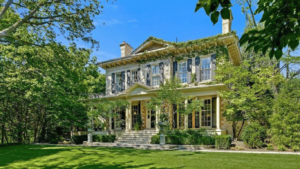The real estate market has observed a significant shift towards integrating health and wellness into home design. This trend, driven by a growing awareness of the importance of personal well-being, has begun to influence various aspects of residential architecture and interior design across the country.
Homebuilders and designers are increasingly focusing on creating spaces that promote both physical and mental health. This has led to the incorporation of natural elements, such as increased natural light, indoor plants, and materials that improve air quality. These elements are not only aesthetically pleasing but also contribute to a healthier living environment.
Another key aspect of this trend is the emphasis on fitness and relaxation spaces within homes. With the rise of remote work and the increased focus on personal health, many Canadian homes now feature dedicated areas for exercise, meditation, and yoga. These spaces allow residents to engage in physical activities without the need to leave their homes, thereby supporting their fitness goals and mental well-being.
The kitchen, traditionally the heart of the home, has also seen transformations. Modern kitchens are now designed with a focus on promoting healthier eating habits. This includes larger spaces for meal preparation, better organization, and storage solutions that encourage cooking with fresh, whole foods.
Outdoor living spaces have gained prominence as well, with many homeowners looking to create serene outdoor environments. Features like gardens, outdoor kitchens, and comfortable seating areas not only extend the living space but also encourage spending time in nature, which is known to reduce stress and improve mood.
The role of technology in promoting health and wellness in homes is also noteworthy. Smart home systems that control lighting, temperature, and air quality can create an environment that supports a healthy lifestyle. These systems can be programmed to mimic natural light patterns, maintain optimal indoor temperatures, and monitor air quality, contributing to a better living environment.
In urban areas, where space is at a premium, multi-functional spaces have become popular. These spaces can be easily transformed to serve various purposes, such as a home office that doubles as a workout area. This flexibility is particularly important for those living in condos and apartments, where space optimization is crucial.
Sustainability is another key component of health-focused home design. Energy-efficient appliances, sustainable materials, and water-saving fixtures are increasingly being used in Canadian homes. These features not only reduce the environmental footprint of the home but also contribute to a healthier indoor environment.
The real estate market is witnessing a growing trend towards homes that promote health and wellness. This shift is evident in various aspects of home design, from the integration of natural elements and dedicated wellness spaces to the use of smart technology and sustainable materials. As this trend continues to evolve, it is likely to have a lasting impact on how Canadians view and design their living spaces, prioritizing health and well-being in the process.





